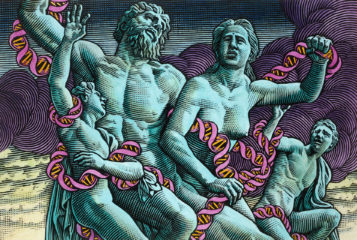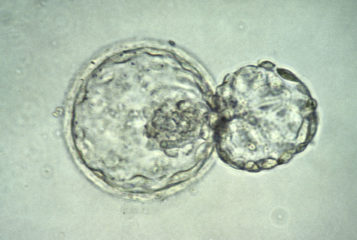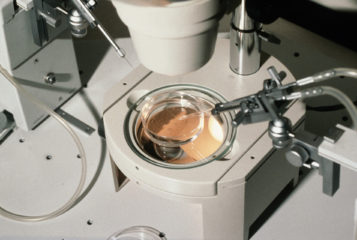A new study has brought more bad news for federally-funded US stem cell researchers. Dr Arjit Varki and colleagues from the University of California, San Diego, and the Salk Institute for Biological Studies, say that all the human embryonic stem cell (ES cell) lines currently approved for use by state researchers in the US are 'contaminated'. All the cell lines, they say, have molecules from mice attached to them, which makes them 'risky for use in medical therapies'. The researchers published their findings in the journal Nature Medicine.
On 9 August, 2001, President Bush put in place a policy that allows federally-funded researchers to work only on ES cell lines that were already in existence by that date. The policy allows them to work on cell lines already derived from embryos, but does not condone the destruction of further embryos. At the time the policy was announced, the US National Institutes of Health (NIH) claimed that there were 78 ES cell lines worldwide that could be used. Later evidence shows that the number actually available is closer to 20.
Federal researchers have complained about the lack of ES cell lines available to them, as well as saying that the ones that are available are not good for research as they have been contaminated with mouse 'feeder' cells. ES cell lines created since Bush's policy was put in place have not used mouse cells, and so are potentially better in terms of future research on humans and clinical trials. Now, Dr Varki's team seems to have confirmed the scientists' speculations. Their study shows that the ES cell lines were 'lined with cells from mice and bathed in blood serum from calves and other animals', and had become contaminated with a type of sialic acid, called Neu5Gc, which is found in a number of mammals, but not in humans. The presence of this acid is one of the major reasons that animal tissue and organs transplanted into humans are rejected. When the researchers exposed the cells to human blood serum containing Neu5Gc antibodies, the serum destroyed the ES cells. The researchers conclude that if the ES cells were transplanted to a human, an 'immune system attack' would 'wipe out' any ability that the cells had to treat disease.
It would take 'at least a year or two - if possible at all - to find a way to salvage' the ES cell lines by removing the mouse molecules. 'It would seem best to start all over again with newly derived human embryonic stem cells that have never been exposed to any animal products', said Varki, adding that 'such an approach could not be pursued under existing rules for the use of federal grant dollars'. Dr James Battey, chair of the NIH stem cell task force, said that 'people have always been concerned about the possibility that something deleterious might be transferred from feeder cells to stem cells', adding 'this puts a face on that substance'.
Sources and References
-
Study Says All Stem Cell Lines Tainted
-
Stem cell lines reported contaminated
-
Human stem cells trigger immune attack
-
US bank of stem cells 'is dangerously contaminated'






Leave a Reply
You must be logged in to post a comment.